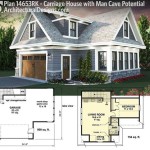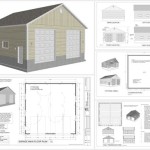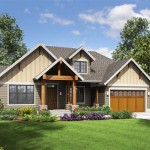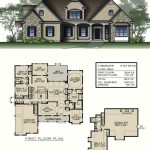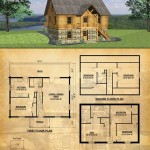Tiny House with Basement Plans: Expanding Small Space Living
The concept of tiny house living has gained significant traction, appealing to individuals seeking minimalist lifestyles, reduced environmental impact, and financial freedom. While the defining characteristic of a tiny house is its compact footprint, typically ranging from 100 to 400 square feet, innovative approaches have emerged to maximize usable space. One such approach is the integration of a basement, effectively doubling the living area without significantly increasing the visual or physical footprint of the structure above ground.
Constructing a tiny house with a basement presents a unique set of challenges and opportunities. It requires careful planning, adherence to local building codes, and a solid understanding of structural engineering principles. However, the benefits of a basement can significantly outweigh the complexities, providing valuable storage, additional living space, or even a dedicated workspace.
Benefits of a Basement in a Tiny House
The incorporation of a basement into a tiny house offers several key advantages, primarily centered around space optimization and functionality. These advantages include increased storage capacity, expanded living area, and enhanced design flexibility.
Increased Storage Capacity: One of the primary challenges in tiny house living is minimizing possessions and finding adequate storage solutions. A basement provides a dedicated space for storing seasonal items, tools, equipment, and other belongings that would otherwise clutter the main living area. This allows for a more organized and uncluttered living environment, promoting a sense of spaciousness and well-being.
Expanded Living Area: A basement can be transformed into a functional living space, effectively doubling the square footage of the tiny house. This could include a bedroom, home office, recreation room, or even a secondary living area. The additional space allows for greater flexibility in design and layout, accommodating a wider range of lifestyle needs and preferences. For example, a basement bedroom can provide a private and quiet retreat, while a basement office can offer a dedicated workspace free from distractions.
Enhanced Design Flexibility: Integrating a basement into the design of a tiny house opens up new possibilities for customization and personalization. The basement can be adapted to suit specific needs, with options for different layouts, finishes, and functionalities. This allows for a more tailored and personalized living experience, reflecting the individual tastes and preferences of the occupants. Furthermore, a basement can house essential utilities such as the water heater, furnace, or electrical panel, freeing up valuable space on the main level.
Key Considerations for Tiny House with Basement Plans
Planning a tiny house with a basement necessitates meticulous attention to detail and a comprehensive understanding of various factors. These factors include site suitability, structural integrity, building codes, and access and egress considerations.
Site Suitability: The feasibility of building a basement depends heavily on the characteristics of the building site. Soil composition, water table levels, and drainage patterns must be carefully assessed to ensure the stability and integrity of the foundation. Sites with high water tables or unstable soil may require additional engineering and construction measures, potentially increasing the cost and complexity of the project. A geotechnical survey is crucial to determine the suitability of the site and identify any potential challenges.
Structural Integrity: The structural integrity of the entire building, including the basement and the superstructure, is paramount. The foundation must be designed to withstand soil pressure, hydrostatic pressure, and the weight of the house above. Proper construction techniques, including reinforced concrete and adequate waterproofing, are essential to prevent water damage and structural failure. A qualified structural engineer should be consulted to ensure that the design meets all applicable codes and standards.
Building Codes and Regulations: Compliance with local building codes and regulations is mandatory. These codes typically address issues such as foundation depth, wall thickness, ceiling height, ventilation, and emergency egress. Basement spaces often have specific requirements related to fire safety and accessibility. It is crucial to consult with local building officials to obtain the necessary permits and ensure that the design meets all applicable requirements. Failure to comply with building codes can result in costly delays, fines, or even the demolition of the structure.
Access and Egress: Providing safe and convenient access to the basement is an important consideration. This typically involves a staircase leading from the main level to the basement. The staircase must comply with building codes regarding dimensions, headroom, and handrails. In addition, adequate egress options are essential for safety in the event of a fire or other emergency. This may include an emergency escape window or a separate exterior entrance. The egress route must be clearly marked and easily accessible.
Developing Tiny House With Basement Plans
The development of tiny house with basement plans requires a structured approach involving thorough research, professional consultation, and detailed documentation. This process encompasses initial design considerations, plan development, and obtaining necessary permits.
Initial Design Considerations: The initial design phase involves defining the overall goals and objectives of the project. This includes determining the size and layout of the basement, the intended use of the space, and the desired aesthetic. It is important to consider the relationship between the basement and the main level, ensuring a cohesive and functional design. Factors such as natural light, ventilation, and accessibility should be carefully considered. Sketching preliminary floor plans and elevations can help visualize the design and identify potential issues early on.
Plan Development: Once the initial design is established, detailed construction plans must be developed. These plans should include floor plans, elevations, sections, and details, providing comprehensive information for the builder. The plans should specify the materials to be used, the construction methods to be employed, and the location of all structural elements, utilities, and fixtures. It is essential to work with a qualified architect or designer to ensure that the plans are accurate, complete, and compliant with all applicable codes and standards.
Permitting Process: Obtaining the necessary building permits is a crucial step in the construction process. This typically involves submitting the construction plans to the local building department for review. The building department will assess the plans for compliance with building codes and regulations. If the plans are approved, a building permit will be issued, allowing construction to proceed. It is important to allow sufficient time for the permitting process, as it can sometimes take several weeks or even months to obtain the necessary approvals. Regular communication with the building department can help expedite the process and avoid potential delays.
The construction of a tiny house with a basement is a complex undertaking that requires careful planning, meticulous execution, and adherence to all applicable codes and regulations. However, the benefits of a basement, including increased storage, expanded living area, and enhanced design flexibility, can significantly enhance the functionality and livability of a tiny house.
Proper waterproofing is paramount to prevent moisture intrusion and potential damage to the basement. This includes the application of waterproof coatings to the exterior of the foundation walls, the installation of drainage systems, and the use of moisture-resistant materials in the interior. Regular inspections and maintenance are essential to ensure the long-term integrity of the waterproofing system.
Ventilation is also crucial to prevent the buildup of moisture and mold in the basement. This can be achieved through the installation of ventilation fans, the use of dehumidifiers, and the provision of adequate air circulation. Proper ventilation not only protects the structure from damage but also improves the air quality and comfort of the living space.
Lighting is an important consideration, especially in basements that are partially or entirely below grade. Natural light can be introduced through the use of windows or light wells. Artificial lighting should be carefully planned to provide adequate illumination and create a pleasant and inviting atmosphere. The use of energy-efficient lighting fixtures can help reduce energy consumption and lower utility bills.
The integration of utilities, such as plumbing, electrical, and HVAC systems, must be carefully coordinated during the design and construction phases. The location of these systems should be planned to minimize interference with the living space and ensure easy access for maintenance and repairs. All utility installations must comply with applicable codes and standards to ensure safety and efficiency.
Ultimately, the decision to build a tiny house with a basement is a personal one that depends on individual needs, preferences, and financial constraints. However, with careful planning and execution, a basement can be a valuable addition that significantly enhances the functionality and livability of a tiny house.

Small Cottage Plan With Walkout Basement Floor

Vacation Cabin Plans For A Small Rustic 2 Bedroom Home Basement House Floor

Small Cottage Plan With Walkout Basement Floor

27 Adorable Free Tiny House Floor Plans Craft Mart

New Tiny House Plans Blog Eplans Com

Pin On Design

Hillside And Sloped Lot House Plans
Small 2 Bedroom Bungalow Plan Unfinished Basement 845 Sq Ft

Cottage House Plan With 3 Bedrooms And 2 5 Baths 3800

645 Sq Ft Small House With Basement

